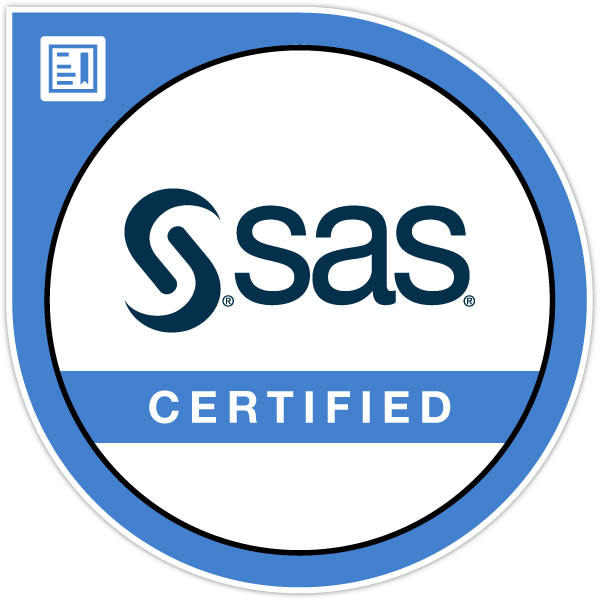Machine Learning Using SAS® Viya®
CPML83 : CPML51
This course discusses the theoretical foundation for techniques associated with supervised machine learning models. A series of demonstrations and practices is used to reinforce all the concepts and the analytical approach to solving business problems. In addition, a business case study is defined to guide participants through all steps of the analytical life cycle, from problem understanding to model deployment, by illustrating data exploration, data preprocessing, feature selection, model training and validation, model assessment, and scoring. This course is the core of the SAS Viya Data Mining and Machine Learning curriculum. It uses Model Studio, the pipeline flow interface in SAS Viya that enables you to prepare, develop, compare, and deploy advanced analytics models. You learn to train supervised machine learning models to make better decisions on big data.
Learn How To
- Apply the analytical life cycle to a business need.
- Incorporate a business-problem-solving approach in daily activities.
- Prepare and explore data for analytical model development.
- Create and select features for predictive modeling.
- Develop a series of supervised learning models based on different techniques such as decision trees, ensembles of trees (forest and gradient boosting), neural networks, and support vector machines.
- Evaluate and select the best model based on business needs.
- Deploy and manage analytical models under production.
Who Should Attend
Business analysts, data analysts, marketing analysts, marketing managers, data scientists, data engineers, financial analysts, data miners, statisticians, mathematicians, and others who work in correlated areas
Prerequisites
Before attending this course, participants should have at least an introductory-level familiarity with statistics and machine learning concepts. You can gain this knowledge by first attending the Statistics You Need to Know for Machine Learning course. Previous SAS software experience is helpful but not required.
SAS Products Covered
SAS Viya
Course Outline
Getting Started with Machine Learning and SAS Viya
- Machine learning in business decision making.
- Supervised prediction: preparing the data and building the initial model.
- A closer look at SAS Viya.
- Exploring the data and replacing incorrect values.
- Extracting features.
- Transforming inputs.
- Selecting features.
- Best practices in data preparation.
- Selecting an algorithm.
- Building a default decision tree model.
- Modifying the model: tree structure.
- Modifying the model: recursive partitioning.
- Modifying the model: pruning.
- Building and modifying ensembles of trees.
- Building a default neural network model.
- Modifying the model: network architecture.
- Modifying the model: network learning and optimization.
- Building a default support vector machine model.
- Modifying the model: methods of solution.
- Modifying the model: kernel function.
- Model assessment and comparison.
- Model deployment.
- Exploring additional nodes in Model Studio.
Live Class Schedule
Duration: 14 hours
Step into our live classes and experience a dynamic learning environment where you can ask questions, share ideas, and connect with your instructor and classmates. With on-demand lab hours, you can explore the material at your own pace. Our globally acclaimed instructors will motivate you to think bigger, so you can take what you've learned and achieve your biggest goals.
Private Training
Get training tailored specifically for your team, led by expert SAS instructors. Choose from virtual sessions, or training at your location (or ours). Perfect for teams seeking a customized curriculum and plenty of interaction with a SAS specialist. We'll schedule it at a time that works for you.
Mentoring Services
Take your training to the next level with personalized mentoring. While private training offers structured coursework, mentoring provides hands-on, real-time support from a subject matter expert. As you work with your own data, you'll receive expert guidance to help you uncover insights, unlock the full potential of your data, and make faster progress. Perfect for those looking to apply what they’ve learned and see quicker results.

This course helps prepare you to earn the following SAS Credentials:
SAS Certification Manager
SAS partners with Pearson VUE to provide you with the best possible certification experience.
Certification Resources



